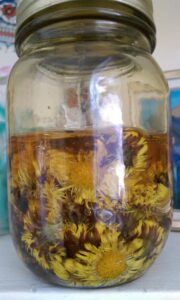Spring greetings! Welcome to my new website and first blog post. T’is the season for new beginnings. I am excited, and I’ll admit, a bit overwhelmed, by the technology at my disposal, yet I am ready to explore its worth – which to me is connecting more closely with you, my fellow herb enthusiasts.
 Modern humans are herb deficient; no where more so than here in North America. My intention with this blog is to ensure that you meet your daily herbal requirements. I hope to do so by inspiring you to include herbs in your life in a variety of seasonally relevant ways. Plants are far more fascinating and useful than they are given credit for, learn more…
Modern humans are herb deficient; no where more so than here in North America. My intention with this blog is to ensure that you meet your daily herbal requirements. I hope to do so by inspiring you to include herbs in your life in a variety of seasonally relevant ways. Plants are far more fascinating and useful than they are given credit for, learn more…
April showers bring the first medicinal bloom of spring – coltsfoot – Tussilago farfara (say Latin plant names out loud five times- it’s good for your brain).
This common weed is found in abundance in disturbed sites, preferring gravel and cement to soil (look for it at the base of building foundations). It is often mistaken for dandelions, but upon close examination their differences are clear. Unlike most flowering plants, coltsfoot produces flowers before leaves. The flowers are shaped like a wheel and are bright yellow. The stems are scaly. The leaves are almost round, paler underneath and covered in a soft downy mesh. The flowers are harvested in early spring and the leaves in late spring.
The Latin name comes from tussis (a cough) and ago (to banish) – it is an excellent respiratory remedy. It is soothing to dry airways due to its mucilage content. It was traditionally used in smoking mixtures to treat asthma and as a spring tonic for clearing lingering respiratory fluids from winter colds. As a compress it is a wound healer and anti-inflammatory.
There has been controversy over coltsfoot’s safety and that of other pyrrolizidine alkaloid (PA) containing plants such as comfrey and borage. Animal experiments have shown PA to be a liver toxin. As is often the case, findings are contradictory. Coltsfoot has been used medicinally for centuries and herbalists continue to use this powerful herb with awareness, in therapeutic doses, for short periods of time.
Prepared as either a hot or cold infusion, it makes a thick, mucilaginous brew. Coltsfoot flower honey is my favourite use of this herb. Wilt a cup of the flowers for three days, then put them in a glass jar and cover them with honey. Let it sit for one week, then strain the honey. The honey will extract its wild fragrancy and some of its medicinal properties, add it to your herbal teas.
May the return of the green bring freshness to your senses and vitality to your spirit.
